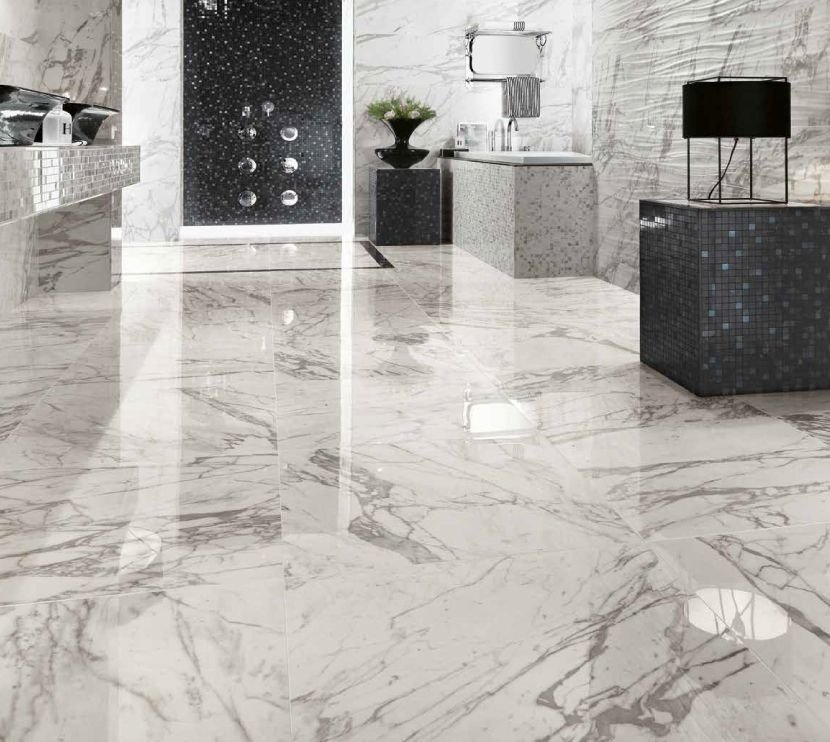THE BEAUTY AND FEEL OF MARBLE
I guess this is a personal thing, what do you prefer aesthetically? If I was designing my dream kitchen it would always feature real marble, maybe classic Carrara or my new favourite, Arabescato… either way, there’d be marble and lots of it!! I guess I’m the kind of person who would choose something for its beauty and not just for its function. Oh, and if you’re into cooking and baking, a marble top is a must – the cool surface is ideal for rolling doughs and fresh batches of pasta with minimal sticking!!

Natural Stone
There’s a piece of geologic history in every slab of natural stone. The beautiful slabs of granite, marble and quartzite showcased at Bhandari Marble World truly offer a glimpse into the past. The movement in the stone that visually catches the eye like fine art is a real representation of the movement of the Earth over time.

Why Is Location Important?
Various locations around the world experienced different geologic pasts. Some regions were marked by dramatic earthquakes as the Earth’s tectonic plates crashed into each other, eventually forming mountains over time; other regions grew mountains more slowly with the gradual shifting and lifting of the tectonic plates.

Still, other landmasses spent millions of years underwater, accumulating vast deposits of limestone and calcite that also eased its way closer to the surface of the soil as the Earth adjusted itself.

From all this, very slow activity –
The pressure under which the layers of minerals and other debris melded together deep beneath the grasses and forests and mountains and volcanoes – came natural stone. Many of these same stones adorn kitchens, bathrooms and showrooms around the globe, including Bhandari Marble World.

The History of Granite and Quartzite
Granite, for instance, is an igneous stone formed from magma. Most granites began as molten magma deep beneath the Earth. As tectonic plates shifted, the magma moved closer to the surface and slowly cooled to form the stone we all know as granite today. Different minerals present at the time the granite was formed account for the large variety of granite available around the world.

Quartzite is formed from grains of sand that fuse together and crystalize under pressure. The colours present in quartzite and sandstone come from the sands and other minerals that were carried through the sand by the water.

The History of Marble
Marble is a metamorphic stone, formed from the oceans. Shells and other calcium-rich debris made of calcite or dolomite formed crystals under intense heat and pressure, deep underground. The top marble producing countries are Italy, Spain and China.

Marble has been excavated for centuries. Bhandari Marble World today sells exquisite marble from the exact same quarry in Carrera, Italy. Calcutta Gold is popular marble.

Manufacturing Process
The raw stone used to produce slate floor tile can be found in mountains around the world, with productive quarries in Europe, Asia, and across the Americas. The region that the material is sourced the stone, which will, in turn, affect the look and characteristics of the slate in its finished state.

These pieces are often gauged, a process which evens out the back to make them easier to install.

Flooring Options
Gauged/ungauged: At the time it is extracted, the slate is a rough, broken material like you would expect from any rock you find on the ground. Known as ungauged slate, these materials are usually reserved for outdoor applications where they can be sunk into the ground for stepping stones.

Crafted:
In many cases, this is desirable, as it makes the material feel more rugged and earthy. mountain born state.

Honed: In some cases, slate tiles will be polished to the point where they have perfectly smooth surfaces.

Polished:
This is a process where the tile is refined to the point that it actually glistens like marble. Very few slates have the textural temperament to achieve a polished finish, and those that do are easy to scratch and damage. The look can be simulated with honed tiles, through the application of multiple coats of seal and finish.

Colours
Solid: These tiles are predominantly one colour all the way through. The consistency of hue, and tone, across a single tile and across tile lots can vary to differing degrees in different types of slate. Floors made from solid-coloured stone materials tend to be more formal and subdued.

Multicolour:
Many states will have multiple colours within their surface. These can be matched hues, or they can be wildly contrasting, depending on the type of material.

New Discoveries of Quarries and Technology
New quarries are always being discovered, adding to the various customers have now grown to expect. All types of natural stone are quarried from the Earth using pit mining techniques. Prospectors will scope out a location where natural stone is expected to exist and look for a small outcropping of stone that has become exposed by wind and rain. Site is selected, the soil and plants above are cleared to make way for machinery to excavate the stone.

The whole process of finding a new quarry site and obtaining the environmental permits to proceed with the quarry operation can take several years.

The natural stone suppliers for Bhandari Marble World are located all around the world. Brazil is among the top suppliers and is one of the largest exporters of natural stone in the world. Bhandari Marble World imports natural stone from Italy, India and Africa.

The vast array of natural stone available on the market today and at Bhandari Marble World makes it nearly impossible for someone looking for a natural stone countertop to walk away from the showroom look around, chances are they will be amazed at the variety of stone.

Added by expert and export team of Bhandari Marble World Kishangarh Rajasthan 305801



